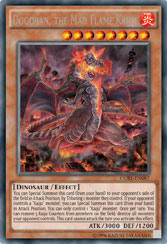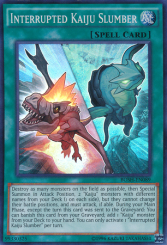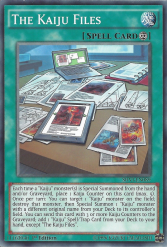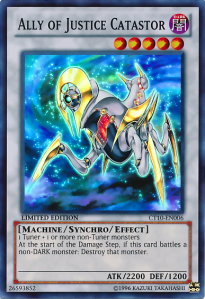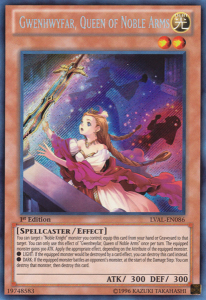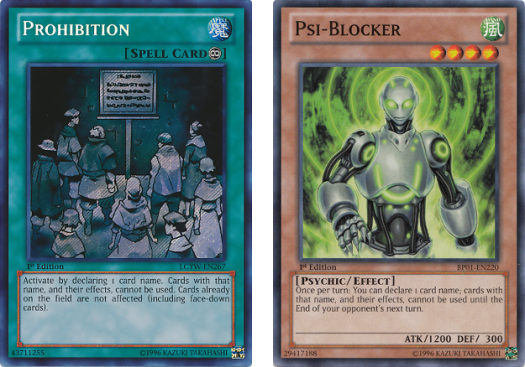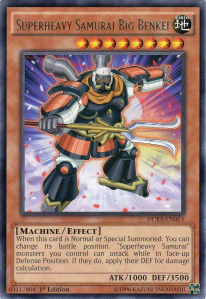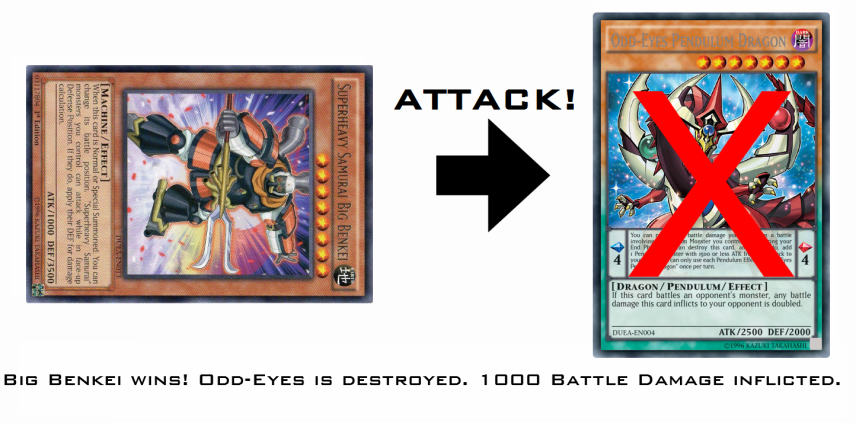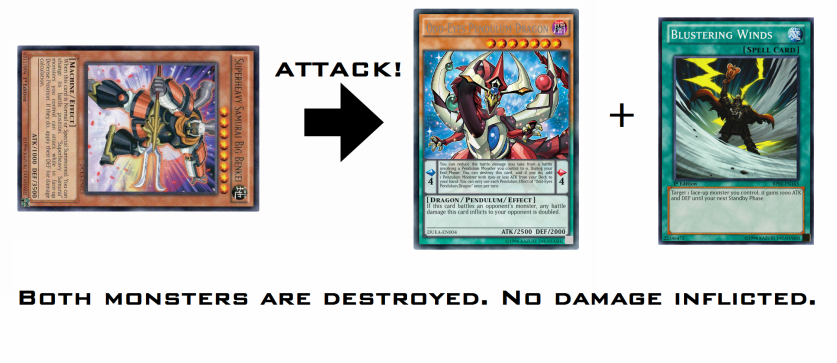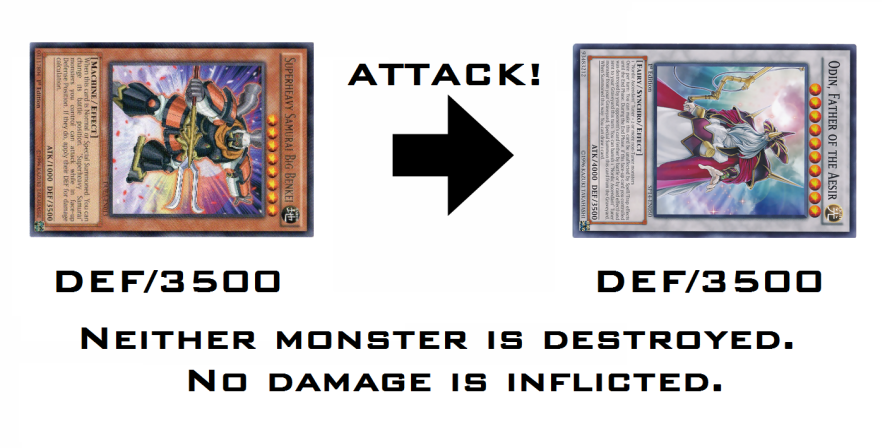It’s unfortunate that I couldn’t attend the Secrets of Eternity Sneak Peek. I was really hoping to write another report and analysis from experience like in my previous two Sneak Peek articles.
That said, I’m going to do something else. I’m going to look at the set and take my best guess at what the sealed event might have been like.
First off, any Sneak Peek sealed event is going to be dominated by common cards, simply because everyone is going to have seven or eight per pack. The best strategy when building your deck is to use the most generic stuff you pulled, any cards that can work well together, or at least won’t trip each other up. I also firmly believe one should stick with the 20-card minimum allowed for Sneak Peek sealed tournaments. Fear of decking out- that is, losing because you must draw a card when you cannot- is not a good reason to use more than twenty cards.
Run the minimum number of cards allowed. If you draw into what you need sooner, you can get over your opponent faster.
Okay, now. The actual format. A full set list of Secrets of Eternity can be found on the Yu-Gi-Oh! Wiki. Cards will be listed in Konami’s official database after the official release date of the set.
Most of the Performapals were printed as commons in this set, so I would fully expect them to make an appearance. Most of the commons are pretty handy in this format. I’m a bit on the fence as to Performapal Spikeagle‘s usefulness since it only gives one of your monsters piercing. Weighing in at only 900/900 doesn’t really help either. Performapal Stamp Turtle also doesn’t seem very handy here, but at least it can bump up the Levels of two monsters by one each turn, similar to Constellar Kaus. The other Performapals are much better here, so I would expect them to see play in many matches.
The Superheavy Samurai don’t make quite as big a showing in this set as they did in the last two. Only five Superheavy Samurai cards were released in this set, and of those five two were commons. The other three were Super Rares. And the commons? Both of them provide exclusive support to the archetype and wouldn’t be of much use in a sealed event.
Two new Dododo monsters make their TCG debut in this set: Dododo Swordsman and Dododo Witch. Swordsman is basically the Big Benkei of the set, acting as a wall and potential board-clearer/beatstick. Witch isn’t that useful on her own, so I would not have expected her to be played by anyone who didn’t also pull Swordsman.
Three of the Infernoids were printed as commons, but I also wouldn’t expect to see them played because of the summoning mechanics employed by the archetype. All three cannot be Summoned, except by banishing 2 “Infernoid” monsters from your hand or Graveyard for their Special Summons. Powerful as the effects of Infernoid Attondel, Infernoid Piaty and Infernoid Seitsemas are, the requirements to summon them are too situational for sealed play. A smart player would avoid using them if they didn’t get loaded down with Infernoid monsters and support cards.
Very few other monsters strike me as usable in the common areas. Toy Knight would open up a few plays if you were behind on field presence, and Raidraptor – Vanishing Lanius could definitely be handy if you pulled at least two. Since the max-3 rule does not apply in sealed formats, getting loaded down with 4 Vanishing Laniuses wouldn’t be the worst thing in the world.
The common Spells are also severely lacking here. Only two strike me as even remotely useful in sealed format: Pendulum Shift and Illusion Balloons. The first lets you target a card in either player’s Pendulum Zone and change its Pendulum Scale to any number from 1 to 10. This card can easily stop Pendulum Summons, or it can enable huge Pendulum Summons! To stop one, pick a card and change its Pendulum Scale to be the same or one off from the card in the opposite Pendulum Zone.
The second card, Illusion Balloons, is a bit more useful if you pulled a decent amount of Performapal monsters. It can only be activated during a turn in which a monster was destroyed while you controlled that monster, BUT it can be activated at any point during that same turn. You don’t have to play it right when that monster is destroyed! (Is anyone else reminded of Last Will?) When you play Illusion Balloons, you excavate 5 cards on top of your deck. If there are any “Performapal” monsters in there, you can Special Summon 1 of them. Whether you Special Summon or not, the remaining cards are shuffled back into the deck.
Now the common Traps are where things get interesting… and nasty. Echo Oscillation can be used to draw additional cards if you managed to get a ton of Pendulum Monsters. Even just a few can fuel this card’s effect.
The Performapals received two common Trap Cards: Last Minute Cancel and Performapal Call. I can see both being used by anyone who received a decent number of Performapal monsters. The first puts all of your monsters in Defense Position, and can even be used without Performapals. The second can negate a direct attack and add up to two Performapals to your hand from the deck.
Mischief of the Gnomes is a very interesting card. It’s a very serious Level disruption card, and can even be used twice in a single turn! If you’re expecting Xyz Monsters, this is a great card to have.
Wall of Disruption… by the God Cards, this thing is amazing. When your opponent attacks, all Attack Position monsters they control lose 800 ATK for each monster your opponent controls. 800 ATK! For each monster they control, regardless of position! So if your opponent has three monsters, two in Attack Position and one in Defense, the two monsters in Attack Position will lose 2400 ATK when you activate this card, while the one in Defense Position is unaffected. Anyone who pulls this is more than ready for most attacks by big monsters!
The last Trap I want to look at is Soul Strike. It’s not very useful until the late game, but it’s still pretty handy at that point. If your Life Points are at 4000 or lower when someone declares an attack involving two monsters battling one another, you can pay half your Life Points to play this card. Your monster then gets an ATK boost equal to 4000 minus your current LP. So if you’re right at 4000 when you play this card and you activate it, you would pay 2000 LP, and your monster gains 2000 ATK. Cool, huh? To balance this, you’re only allowed to activate 1 “Soul Strike” in a turn.
The Rare cards are the next most influential group in a sealed tournament. You’re guaranteed one in every pack, even if you pull a Super, Ultra, Secret, Ultimate, or Ghost Rare. That extra-shiny card will replace a common card instead of a Rare. There are plenty of Rare cards that would make a nice impact on the game, so let’s have a look, starting with the monsters.
The promotional card, Dragoons of Draconia, is also a Rare card in this set. It’s a Normal Pendulum Monster, so it has no monster effects, but 1800 ATK and a Pendulum Scale of 2 make up for this. Its Pendulum Effect won’t have any effect on the game if you don’t end up with more than one copy of this guy, but Scale 2 is reason enough to put it in a Pendulum Zone.
Frontline Observer is a card that I would definitely watch out for. It has two powerful search effects. The first is activated in the turn it was Normal Summoned, and lets you add an EARTH Pendulum Monster from your deck to your hand. Plenty of those about these days. The second effect can be activated in the End Phase of your next turn if it lives that long. You Tribute it as a cost and add any EARTH monster from your deck to your hand. At only 1000 ATK, this would be hard to pull off, but the first effect should be plenty for most players.
Dragon Dowser is a nifty little Wyrm-Type monster that lets you Special Summon an EARTH Pendulum Monster from your deck if it’s destroyed by your opponent and sent to your Graveyard. The monster you summon is placed in Defense Position and is destroyed at the end of the turn. A good way to mount a defense, especially since it weighs in at an even 1500/1500.
Two of the Burning Abyss monsters are also worth looking at here: Farfa, Malebranche of the Burning Abyss, and Libic, Malebranche of the Burning Abyss. Farfa has a solid 1900 DEF and can banish a monster for one turn if it’s sent to the Graveyard. You can take advantage of this by Normal or Flip Summoning Farfa while you have a non-BA monster in play (yes, this includes face-down monsters). Use this to temporarily remove a problem, and either go for game or do something else that gets you closer to game.
Libic isn’t quite as useful, but still pretty handy. If it goes to the Graveyard, you can Special Summon a DARK Level 3 Fiend-Type monster from your hand, but its effects are negated. If you just need Libic as a wall, or you have a Cagna, Malebranche of the Burning Abyss on you, you can use Libic to play it without it self-destructing when it’s got company.
The only Spell Card I would expect to see is Void Expansion, and that’s solely for its ability to generate Tokens. There isn’t anything else in the Spell/Trap department for Rares that’s worth running in a sealed event.
Before I move on to Super Rares, I should probably cover the short-print commons. While these cards are technically common cards, they are actually few in number. You won’t come across these as often as you will other commons.
First on the list is Marmiting Captain. The Marauding Captain of ages past was also apparently one of the army chefs. This retrained version allows you to shuffle a card from your hand into your deck, then draw a new card to replace it. If the card you draw is a monster, you also get to Special Summon it.
Next up is Legendary Maju Garzett. I would fully expect anyone who pulled this monstrosity to make good use of it. It’s massive ATK potential coupled with its ability to inflict piercing Battle Damage make this card a deadly force to be reckoned with in any sealed tournament. I’d have been extra careful around this thing.
Extra Net is another short print card, but I wouldn’t really expect to see it very much in a Secrets of Eternity sealed tournament. If a player Special Summons any monsters from the Extra Deck, the OTHER player gets to draw 1 card. I might side it in if I find my opponent can make good use of Pendulum Summons, but don’t really see a lot of other uses in this format.
The last short print is Double Trap Hole. I’m pretty sure this card was designed to be anti-Shaddoll and anti-Pendulum, but I doubt it would have much use in a sealed format. Basically, it banishes any monster or monsters that your opponent Special Summons in Defense Position. After looking at everything else in this set, I wouldn’t see this card as very useful in sealed.
Now for the Super Rare cards. When it comes to the higher rarities, you have to bear in mind that most of them are designed to help existing archetypes that are topping in Tier 2 events. Even if you DO pull one in a sealed event, don’t expect it to be very useful in that event. And if it is useful in sealed, chances are it won’t be great anywhere else.
First up is Satellarknight Rigel. A Level 4 monster with a whopping 1900 ATK is actually pretty handy here. He also has the added effect of boosting another “tellarknight” monster’s ATK by 500 points, but that monster is sent to the Graveyard in the End Phase. Because the effect is optional, Rigel makes a great beater, and can also be used as a one-time out to bigger threats.
Infernoid Antra might be one of the few Infernoids to be played in a sealed event, if not the only one at all. It’s easier to summon than most other Infernoids, only requiring that you banish 1 Infernoid monster from your hand or Graveyard. It has a solid 2000 DEF and the ability to return 1 face-up card your opponent controls to the hand once per turn.
We’ll skip the Superheavy Samurai cards and Jinzo – Jector because they aren’t that useful in this sealed format. The next card we’ll look at is Skilled Blue Magician. Neither of its effects are going to be useful here, but it has pretty good stats at 1800/1800.
Lightning Rod Lord is Konami’s latest abomination in their line of “You can’t play Yu-Gi-Oh!” cards. It’s a Level 4 Thunder-Type monster with 1800 ATK and an effect that would make even the pettiest of the Greek gods call foul. “Neither player can activate Spell Cards during Main Phase 1.” No doubt whoever came up with this card and Denko Sekka is getting a raise for helping to maintaining the current control format. Now, unless my 20-card deck seemed especially reliant on Spells, I wouldn’t worry too much about this thing. But if Spells are my only way out of a bad situation, you can bet I’ll be putting a lot of effort into killing this thing so hard, it’ll be in the Graveyard at the start of Game 2.
The only other Super Rare monster worth looking at is Qliphort Cephalopod, and that’s solely because you can Normal Summon it as a Level 4 monster with 1800 ATK, and it’s unaffected by effects of monsters whose Level or Rank is lower than Cephalopod’s current Level.
I would not expect to see any of the Spells or the Trap from the Super Rare cards.
The Ultra Rare cards are even harder to acquire, obviously. However, this does NOT mean you should discount them. Even in a sealed event, Ultra Rares can and will appear, and can have a huge impact on the game. Let’s look at the ones from this set.
Swordsman of Revealing Light is a new spin on an old card and makes an excellent blocker. Not quite the caliber of Gorz the Emissary of Darkness, but still powerful if you pull it. It can not only intercept a direct attack, but will destroy the attacking monster if that monster’s ATK is lower than the Swordsman’s 2400 DEF.
Caius the Mega Monarch is the newest in the line of Konami’s Mega Monarch series, and this one is a doozy. As with each Mega Monarch, it can be Tribute Summoned with only 1 monster, provided that monster was also Tribute Summoned. If you Tribute Summon it, you can banish 1 card on the field and deal 1000 damage to your opponent- regardless of whose card it was! If the card you banished was a DARK monster, you also get to banish every other copy of that card your opponent has that isn’t on the field. Yes, Extra Deck too. And on top of all this, you can target 2 cards instead of 1 if you used at least one DARK monster for its Tribute Summon.
Infernoid Harmadik is another banish-1 Infernoid monster, making it easy to summon as well. It has 1600 ATK, pretty average here, and the ability to destroy any monster on the field once per turn. Not too shabby!
Qliphort Stealth is another Ultra Rare card, but I still wouldn’t play it myself if I didn’t also pull Cephalopod or Monolith, except as an 1800 beater.Just doesn’t seem worth it in a sealed format.
There’s a Level 6 Synchro called Metaphys Horus with pretty generic conditions- 1 Tuner + 1 or more non-Tuner monsters. If you got a Tuner and this card, go ahead and run them because it’s a pretty solid monster. If you use a Pendulum Monster to as Synchro Material, you even get to use two of its effects instead of just one! Awesome, right?
A Rank 2 Xyz Monster made it into the Ultra Rares. It’s called Sky Cavalry Centaurea. It has 2000 ATK and can’t be destroyed by battle so long as it has Xyz Material. Now, I know what you’re thinking: There has to be a Tiras-like downside, right? Nope. The only time you detach Xyz Materials from it is when you activate its effect after it battles another monster- and activating this effect is COMPLETELY optional!
The lone Trap Card among the Ultras is Eye of the Void, but all it does is let you summon an Infernoid for free while its effects are negated for that turn. Not that big a threat if that player didn’t also pull a really good Infernoid.
Finally, the Secret Rare cards. Remember what I said about not discounting Ultras just because they’re hard to get? Yeah, same thing applies here.
Honestly, though, there are only four Secret Rare cards that could be any kind of useful here. The first is Qliphort Monolith, and that’s solely because it’s a 2400 ATK monster. Not much else going for it in sealed, really.
Next up is the great Pokemon reference, A Wild Monster Appears! This would actually make a lot of unplayable monsters you pulled pretty useful since it can summon one from your hand, ignoring its summoning conditions.
Pot of Riches is next, and is great Pendulum support. If you get this and a decent number of Pendulum Monsters, it’s a good idea to run it in your Main Deck. If not, oh well.
Soul Transition is the last of the useful Secret Rares for sealed format. If none of your monsters were Special Summoned, you can Tribute 1 face-up Level 4 monster that was Normal Summoned or Set to draw 2 cards. Its two downsides are that you can only play 1 copy of Soul Transition per turn, and you cannot Special Summon in the same turn.
Overall, this set seems pretty balanced between attack and defense, so I’d expect a lot of back and forth action here. There’s also a few control elements, so the clever players would likely rise to the top. Lucky pulls will also have a huge influence on the outcome, as always.
The point of this article is to show you that you can still analyze the cards in a set and be prepared for a sealed tournament. Be prepared. Know what to expect and build your deck accordingly. Go for cards with generic effects first and foremost, and then use support cards if you have a ton of cards from that series, such as Performapals.
No way I’m going to miss the next Sneak Peek. Cover monster of Crossover Souls is called Clear Wing Synchro Dragon, and anyone who knows me knows how much I love Synchro Monsters. Until next time, play fair, and have fun!
